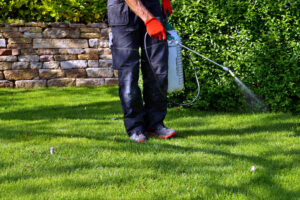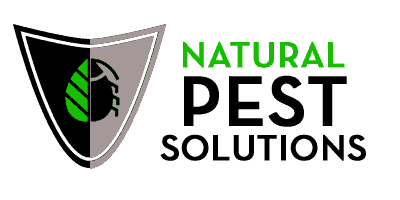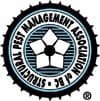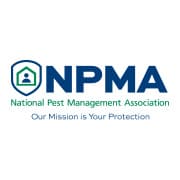Having a nice lawn is the goal of most homeowners, and it makes a lot of sense all in all. After all, the lawn is a big part of curb appeal, and most people want to have an appealing home. However, your lawn is a common target for all sorts of pests, which can lead to all sorts of issues. Besides ruining gatherings in the backyard, they cause a lot of damage to the lawn itself. And some particularly persistent pests can even get inside your home and do damage there as well. So, it’s generally in your best interest to keep your lawn clear from pests in the long run. To help you out with that, we’ve put together a list of the best practices for a pest-free lawn.
Aerate your lawn
Most pests are attracted to dead and rotting plants, and a common cause of dying plants in your lawn is a lack of nutrition. As such, one fairly simple way to keep a pest-free lawn is to simply aerate it from time to time. Aeration is something most people ignore, but it’s a very simple process that helps a lot in the long run. To put it simply, an aeration machine is used to loosen the soil in your lawn, which leads to nutrients being able to reach the roots much more easily, and your lawn will be much healthier. A healthy lawn is less attractive to certain pests, but keep in mind that this isn’t a catch-all solution. So, from time to time, a doing an inspection is a good idea. When it comes to pest control, if you want to be safe, it’s best to get professional assistance.
Keep your lawn properly maintained
 General maintenance is also quite important for your lawn, no matter how you look like it. Your lawn needs to be regularly mowed to the right height. If it gets out of control, pests can use it to hide and some of them even make nests in tall grass. On the other hand, if you cut it too short, your lawn will get sunbaked and die. A lawn that’s too short will also have difficulty retaining nutrients and get damaged more easily. And if you have artificial grass turf, keep in mind that it still needs to be maintained on a regular basis. While it’s certainly a lot less demanding than a regular lawn, artificial grass still needs some attention in order to stay beautiful and, more importantly, clear of pests. So, make sure to take the time to care for your turf as well, because it’s very much needed.
General maintenance is also quite important for your lawn, no matter how you look like it. Your lawn needs to be regularly mowed to the right height. If it gets out of control, pests can use it to hide and some of them even make nests in tall grass. On the other hand, if you cut it too short, your lawn will get sunbaked and die. A lawn that’s too short will also have difficulty retaining nutrients and get damaged more easily. And if you have artificial grass turf, keep in mind that it still needs to be maintained on a regular basis. While it’s certainly a lot less demanding than a regular lawn, artificial grass still needs some attention in order to stay beautiful and, more importantly, clear of pests. So, make sure to take the time to care for your turf as well, because it’s very much needed.
Fertilize if necessary
As we already mentioned, a healthy lawn is less likely to have pests. Sometimes, in order to keep your lawn in a good state, you might have to fertilize it. There are a lot of different fertilizers you can use, and certain fertilizers are better for different types of lawns. So, you might have to do some research into what type of fertilizer is best for your lawn. However, this is very much worth the effort, as a well-placed dose of fertilizer can easily make your lawn much healthier. However, make sure not to fertilize too much, as you really only need to fertilize a few times every year. Also, remember that a healthy lawn isn’t enough to keep pests away by itself. You should still keep an eye out for pests in and around your home, and don’t hesitate to call pest control if you get worried.
Keep your trees and shrubs pruned
Larger pests, such as birds and certain rodents, obviously tend to make their nests in trees. And if you let your trees and shrubbery get out of control, you give them easy spots to hide and get into your home. As such, if you have any trees or shrubs on your lawn, it’s very important to keep them properly pruned. Experts from Peak Services Las Vegas note that a well-maintained lawn is much less likely to have pests. This applies to trees and shrubs too, and while they are beautiful, these plants do require quite a bit of maintenance overall. And, when pruning trees and shrubs, you need to be careful not to damage them in the process. After all, with shrubs especially, it can be very easy to snip the wrong spot and end up killing the plant instead of maintaining it, so be careful when doing this.
Water the lawn properly
We’ve already mentioned a few times that proper maintenance is important for a pest-free lawn. Watering your lawn is one of the most basic maintenance activities, overall, but some care is required when watering. If you don’t water the lawn enough, it will dry out and die. On the other hand, watering it too much creates an entirely different set of problems. Mainly, puddles of water which certain pests like to call home, mosquitos are the best example of this, as they lay eggs in puddles of still water. Clearing mosquitos can be somewhat difficult, so the best way to deal with them is to avoid an infestation in the first place. So, when watering your lawn, make sure not to overwater it, as doing this can lead to a lot more issues than it solves. Also, keep in mind that different types of lawns require different amounts of water.
Best practices for a pest-free lawn – wrap up
Having a pretty lawn is all well and good, but neglecting your lawn can lead to bigger issues than aesthetics in the long run. Having a pest infestation is never fun, and a badly maintained lawn can easily attract all sorts of nasty things to your property. These things can then further damage your lawn and even get into your home and cause more trouble there. All in all, keeping pests away from your lawn and house is plenty of reason to give your yard proper maintenance. We hope that this list of the best practices for a pest-free lawn helps you out, and we wish you a good day.





